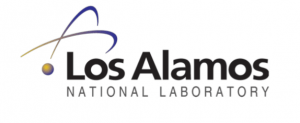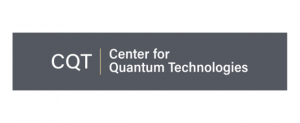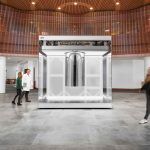Quantum News Briefs March 21: Researchers prepare for quantum sensing in outer space; Qubits put new spin on magnetism: boosting applications of quantum computers; Center for Quantum Technologies launches industry-university cooperative research center program + MORE

Quantum News Briefs March 21: Researchers prepare for quantum sensing in outer space; Qubits put new spin on magnetism: boosting applications of quantum computers; Center for Quantum Technologies launches industry-university cooperative research center program + MORE.
Researchers prepare for quantum sensing in outer space

As part of a new NASA Quantum Pathways Institute consisting of a multi-university research team, UC Santa Barbara professor of electrical and computer engineering Daniel Blumenthal will help to build technology and tools to improve measurement of important climate factors by observing atoms in outer space. Quantum News Briefs summarizes March 16 Phys.org article by Sonia Fernandez, University of California – Santa Barbara
Led by colleagues at the University of Texas (UT) at Austin, Blumenthal and the other researchers will focus on quantum sensing, which involves observing how atoms react to small changes in their environment, using it to infer the time-variations in the gravity field of Earth. This will enable scientists to improve accuracy in measurements of several important climate processes, such as sea level rise, rate of ice melt, changes in land water resources and ocean heat storage changes.
“There have been tremendous advances in quantum methods recently, mostly in the context of computing,” said Srinivas Bettadpur, leader of the new project and director of the Center for Space Research at UT Austin. “We want to use quantum sensing technology in space—where you can watch the entirety of the planet—to solve next-generation problems by observing, interpreting and understanding climate processes.”
The new Quantum Pathways Institute also includes researchers from University of Colorado Boulder, California Institute of Technology and the U.S. National Institute for Standards and Technology (NIST). Click here to read the original Phys.org article in-entirety.
Qubits put new spin on magnetism: boosting applications of quantum computers
 Research at Lawrence National Laboratory using a quantum computer as the physical platform for quantum experiments has found a way to design and characterize tailor-made magnetic objects using quantum bits, or qubits. That opens up a new approach to develop new materials and robust quantum computing.
Research at Lawrence National Laboratory using a quantum computer as the physical platform for quantum experiments has found a way to design and characterize tailor-made magnetic objects using quantum bits, or qubits. That opens up a new approach to develop new materials and robust quantum computing.
“With the help of a quantum annealer, we demonstrated a new way to pattern magnetic states,” said Alejandro Lopez-Bezanilla, a virtual experimentalist in the Theoretical Division at Los Alamos National Laboratory. Lopez-Bezanilla is the corresponding author of a paper about the research in Science Advances. “We showed that a magnetic quasicrystal lattice can host states that go beyond the zero and one bit states of classical information technology,” Lopez-Bezanilla said. “By applying a magnetic field to a finite set of spins, we can morph the magnetic landscape of a quasicrystal object.” (NOTE:A quasicrystal is a structure composed by the repetition of some basic shapes following rules different to those of regular crystals.)
For this work with Cristiano Nisoli, a theoretical physicist also at Los Alamos, a D-Wave quantum annealing computer served as the platform to conduct actual physical experiments on quasicrystals, rather than modeling them. This approach “lets matter talk to you,” Lopez-Bezanilla said, “because instead of running computer codes, we go straight to the quantum platform and set all the physical interactions at will.”
Lopez-Bezanilla selected 201 qubits on the D-Wave computer and coupled them to each other to reproduce the shape of a Penrose quasicrystal.
”I connected the qubits so all together they reproduced the geometry of one of his quasicrystals, the so-called P3,” Lopez-Bezanilla said. “To my surprise, I observed that applying specific external magnetic fields on the structure made some qubits exhibit both up and down orientations with the same probability, which leads the P3 quasicrystal to adopt a rich variety of magnetic shapes.”
Manipulating the interaction strength between qubits and the qubits with the external field causes the quasicrystals to settle into different magnetic arrangements, offering the prospect of encoding more than one bit of information in a single object. Click here to read original announcement in-entirety.
Center for Quantum Technologies launches industry-university cooperative research center program
 The Center for Quantum Technologies (CQT) has launched the first phase of an Industry-University Cooperative Research Center (IUCRC) program with the help of a grant from the National Science Foundation (NSF).
The Center for Quantum Technologies (CQT) has launched the first phase of an Industry-University Cooperative Research Center (IUCRC) program with the help of a grant from the National Science Foundation (NSF).
Purdue University will be the lead site in developing quantum technologies and be joined by researchers from Indiana University, the University of Notre Dame, and Indiana University Purdue University – Indianapolis (IUPUI).
“This collaboration allows us to leverage our collective research expertise to address the many challenges facing multiple industries using quantum technology,” said Sabre Kais, center director and distinguished professor of chemical physics in Purdue’s College of Science. “As a university with world-leading engineering and science programs, and faculty members whose work focuses on many areas of quantum research, Purdue is a natural leader for this center.”
Collaborators include Gerardo Ortiz, Indiana University site director and professor of physics at Indiana University, Peter Kogge, Notre Dame site director and the McCourtney Professor of Computer Science and Engineering at Notre Dame, and Ricardo Decca, IUPUI campus director and professor and department chair of physics at IUPUI.
The IUCRC program enables use-inspired, industry-relevant research through multi-member partnerships across academia, industry, and government. The NSF provides financial and procedural framework for the center’s operations, while the CQT’s members fund, select, and guide the research projects through a collective voting process and mentoring. Members receive a multitude of benefits, including access to talent, significant leverage on investment, and networking opportunities within the vibrant center ecosystem. Click here to read news announcement in-entirety.
Sanjaya Lohani wins Brookhaven seed award competition for quantum information applications
 Sanjaya Lohani, a postdoctoral associate in Associate Professor Thomas A. Searles group, and a U.S Department of Energy Office of Science Co-design Center for Quantum Advantage (C2QA) fellow researcher, won the first Brookhaven postdoctoral seed award competition for quantum information applications.
Sanjaya Lohani, a postdoctoral associate in Associate Professor Thomas A. Searles group, and a U.S Department of Energy Office of Science Co-design Center for Quantum Advantage (C2QA) fellow researcher, won the first Brookhaven postdoctoral seed award competition for quantum information applications.
The $50,000 award, for his work ‘Machine learning assisted variational quantum algorithms for near-term quantum information applications,’ is part of C2QA’s Cross-Cutting Research Seed Funding. His co-principal investigators include Chenxu Liu and Yanzhu Chen, both with Virginia Tech, and the award will be split equally between both Virginia Tech and UIC. Lohani is also collaborating with Brian T. Kirby, a quantum science researcher at DEVCOM U.S. Army Laboratory, on the work.
Lohani has developed a novel approach for controlling and studying quantum systems based on machine learning. He is training classical machine learning software to configure quantum circuits. By streamlining or narrowing the quantum circuits and limiting the number of operations they can perform, they improve the applicability of the quantum hardware.
“We’re trying to reduce the size of the quantum circuit so that it has a small number of operations, and that can be done within the coherence time of the device,” Lohani said. “It can be processed within the millisecond or nanosecond of the device.”
Lohani uses quantum state tomography, which teaches quantum devices to predict the type of resulting quantum system from the given hardware. He is researching ways to teach the device to produce the desired quantum state.
“We are trying to put the hardware information into the algorithm,” Lohani said.
The research centers on finding classical machine learning approaches that can work in conjunction with quantum computing systems. Their goal is to exploit classical machine learning algorithms to push the development of quantum computing hardware.
Classical computing and algorithms are indispensable tools for conducting scientific research. There are a myriad of problems scientists try to address with machine learning algorithms, but some of the bigger questions cannot easily be tackled with classical computing due to their large datasets. For example, studying various configurations of molecules for use in drug discovery is a very slow process. Click here to read the original announcement on the University of Illinois, Chicago.
Sandra K. Helsel, Ph.D. has been researching and reporting on frontier technologies since 1990. She has her Ph.D. from the University of Arizona.




















